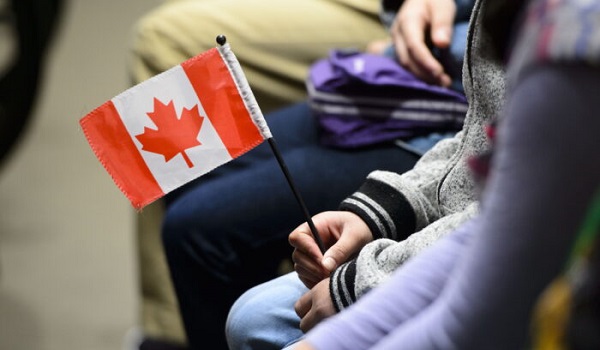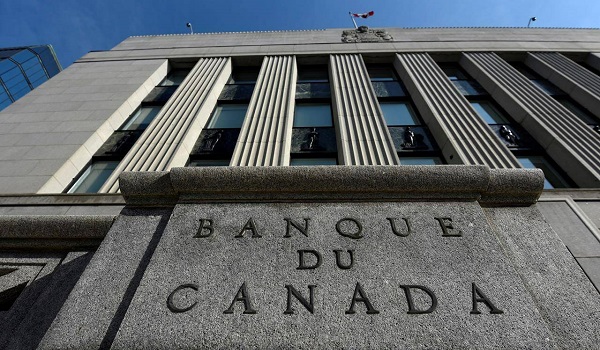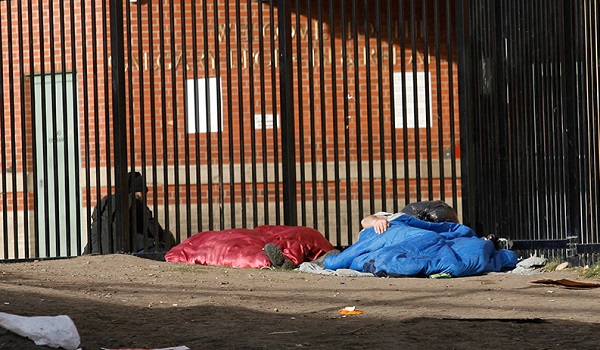Canada’s temporary residents subjected to difficult situations, including bribery and fake jobs
What’s a person looking for a chance to become a permanent resident to do?
Already in Canada but with work permits expiring, many temporary residents are facing limited prospects for permanent residence under the federal government’s scoring system. The rankings are supposed to be based on personal attributes such as age, education and language proficiency, which count for points.
But since Ottawa started cherry-picking candidates on its priority list last summer, many would-be candidates with higher scores are finding the odds stacked against them. Desperation has prompted some to essentially bribe their way to job offers to boost their chances.
“The abuse … of LMIAs has been going on since time immemorial,” said Peter Veress, who has worked in the immigration consulting industry for 27 years and is based in Calgary. “But because of the massive numbers (of temporary residents) that we’re talking now, I’m hearing it more and more.
“It’s become more open because people are more desperate.”
At the heart of the abuse allegations is the Labour Market Impact Assessment, an evaluation process to verify an employer’s need to hire a foreign worker to fill a vacant position. A positive LMIA is proof of an arranged employment in an immigration application, worth an additional 50 to 200 points for a candidate, depending on how important the job position is.
Last month, in announcing a reduction in the number of temporary residents in Canada to slow down the country’s population growth amid a housing crisis, Employment Minister Randy Boissonnault acknowledged the problem and said he’s committed to cracking down on the misuse of the temporary foreign worker program.
“I don’t want anybody putting up a job that is then used to lure somebody here to take an LMIA,” said Boissonault.
“This is not what it’s designed for. If we find and actually locate people who are doing that, then the authorities will get involved.”
Waiting for a shot at residence
There are almost 212,000 candidates in Canada awaiting a shot at permanent residence.
During the pandemic, the federal government made a series of policy decisions to relax the rules on international students and migrant workers to ease the dire labour shortages across the country to keep restaurants open and supply chains running, while opening the doors to displaced Ukrainians and Afghans on humanitarian grounds.
As a result, the temporary resident population has skyrocketed from 1.4 million two years ago to today’s 2.5 million, with 42 per cent of them here on study permits, 53 per cent on work permits and five per cent as asylum seekers.
However, with no further extension for international students’ time-limited post-graduation work permits and the dialing back of the temporary foreign worker program, Veress estimates that some 600,000 of the temporary residents are in limbo, facing a loss of legal status.
“There’s definitely some policy misfires,” he said. “The government was under a lot of pressure to do something and this is the best they came up with. But now we’ve got the unintended consequences of having a whole bunch of people in Canada not wanting to go home.”
The surge of the work permit holders also coincided with the special talent draws launched last June to target immigration candidates with skills in particular sectors: health care; science, technology, engineering and mathematics (STEM) professions; trades, such as carpenters, plumbers and contractors; transport; and agriculture and agri-food. Attracting francophone immigrants outside Quebec is also a priority.
Under the Express Entry system that manages skilled immigration applications, a person creates a profile and tabulates points to earn a score based on personal attributes, on a scale from zero to 1,200 points. Candidates are ranked and picked by Immigration through periodic draws; each draw has its own passing score and only those above the cut are invited to apply for permanent residence.
The sector-specific draws are a response to Canada’s needs to address labour shortages in specific occupations. Since June, 22 of these draws have been conducted, and the lowest passing mark was 354.
Meanwhile, there have been fewer draws for those who don’t fit the profiles, pushing up the required score for everyone else to a latest cut-off at 549, which is unreachable for many international graduates despite a year of Canadian work experience. (The passing score for the most recent francophone draw on March 26 was only 388 points.)
Of the current 211,962 candidates with a profile in the talent pool, only 13,144 or six per cent of people have a score over 500.
One student’s story shows how even that may not be enough.
‘I can see those doors closing in’
Sahil Dhingra, who is now on a postgraduation work permit, has garnered 501 points with his undergraduate degree in biochemistry from University of Delhi and a two-year postgraduate diploma in food science and technology from Centennial College.
Despite his three years of full-time experience in a supervisory role in the food industry, he’s still waiting for his chance after investing more than five years of his life in this country.
“I’m not getting any younger and I can see those doors closing on me,” said the 29-year-old, who came from India in 2018 and whose work permit expires in April 2025 and won’t be extended again. “It’s very frustrating.”
While there’s been a lot of talk about buying job offers among international students in social media groups, Dhingra said he’s not ready to spend his hard-earned money on frivolous or fake positions for permanent residence, and he’s hopeful that the point threshold of the general talent draws will come down with time.
“There is no way for the ranking score to ever come down for these people, with their education maxed out, with English-language proficiency maxed out,” said Pradeep Thankappan, a licensed immigration consultant in Brampton.
The fraudulent jobs often involve international graduates, who shop for job offers from unscrupulous agents and employers.
“What we are talking about is illegal,” Thankappan said. “People sell the LMIA (job offers) for thousands of dollars, depending on the job category. If you are looking at 50 points, then it is so much. If you’re looking at 200 points, it goes up to $50,000. It’s quite brazen.”
Mohamed Negmeldin, another consultant, said unscrupulous agents and employers would advertise these job offers on social media such as TikTok and YouTube. Some positions may not exist, and the employer or middleman would need to create fraudulent payrolls. In other cases, the job seeker must put up with exploitative working conditions to secure a LMIA-job offer.
Officials conduct audits and compliance checks, but Negmeldin said it would take an army to separate the wheat from the chaff because there are still 700,000 job vacancies across Canada. Fake job offers come from both independent owners of franchised businesses and small businesses, but tend to gravitate toward low-skilled jobs because these positions don’t require specific educational qualifications.
“The problem is resources. We have a huge number of temporary foreign workers in Canada,” said Negmeldin, who doesn’t see the sale of job offers going away unless there are more permanent residence pathways available for temporary residents already in Canada.
Warning about temporary workers
Immigration Minister Marc Miller said the department is reviewing the existing programs that bring in temporary workers, hoping to better align streams with labour market needs and weed out abuses in the system.
“We must ensure robust pathways to permanent residence for those who wish to make Canada their home in the long term, and avoid the pitfalls of an economy built solely on temporary workers,” Miller told a news conference recently.
“As part of our efforts for temporary residents to transition to permanent residency, we will have more domestic draws for us and ask provinces and territories … to do the same with their allocations.”
Gabriela Ramo, chair of the Canadian Bar Association’s immigration law section, said that’s a good start, but added that there are scant details on how to get there and said the government must consult immigration policy experts.
“I don’t know how he’s going to go about ensuring that those who are already in Canada get first dibs at the pool,” said Ramo. “The last (Express Entry) draw was 520-something. It’s not easy to get that kind of score.
“It’s a complex issue and so the solutions can’t be simple. When the economy turns, when there’s housing issues and things like that, people often look for simple solutions to complex problems. The minister needs to be very intentional about how things are done.”
Canada could potentially see a spike in asylum claimants, the undocumented population and even fraudulent marriages if temporary migrants find themselves shut out of permanent residence, she warned.
“Are we going to regularize as many of them as permanent residents and flood the system with people who may not be ideal for the labour market?” asked Veress. “Are we going to get tough and start (removal) enforcement action?
“Are we going to see more of these nefarious and creative ways for people to try to work the system and stay in Canada? Probably.”
This article was first reported by The Star















